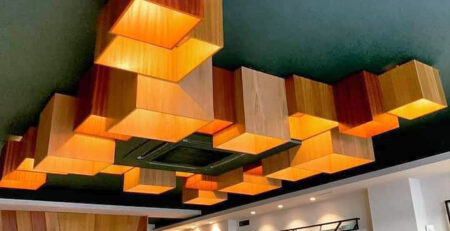Do you want to incorporate underfloor heating in your home? It is a very discreet and effective solution for home air-conditioning. Find out about the advantages and disadvantages of underfloor heating.
The first thing to know is that although there are different heat generation systems, such as air source heat pump or condensation chains, there are also different heat diffusion systems. In other words, there are different ways in which this heat ends up reaching the rooms in the home in one way or another.
In this article we will talk about what underfloor heating is and its particularities.
What is an underfloor heating system?
Underfloor heating is one of the most energy-efficient and comfortable air-conditioning systems on the market.
In essence, it consists of installing a long pipe through which water circulates at a certain temperature. This network of pipes is installed under the floor of the house and hot or cold water circulates through it. This causes heat to radiate from below or to be absorbed to provide a cooling floor.
Underfloor heating is not new, as it has been used for many years: however, we would like to point out that this type of air conditioning system has become one of the most widely used at present for the thermal conditioning of homes.
Advantages of underfloor heating
This air-conditioning system has a number of advantages:
- Versatility, because it allows us to adapt to any space.
- Performance, the pipe circuits are very thin, so that little energy is required to move the water and to heat or cool.
- It has no visual impact, as the whole installation is hidden under the floor, ceiling or walls.
- It continues to emit heat for some time after the system has been switched off.
- No draughts, the floor absorbs heat for cooling or emits heat but without generating draughts which can be annoying.
- Economical and energy saving, being a low temperature system it consumes much less energy compared to other systems working at higher temperatures.
- Uniformity in the way the heat is distributed. This system avoids eradicating asymmetries, i.e. hotter or colder places.
- Environmentally friendly. It uses a heating system that uses the lowest water supply temperature (between 30 and 45º). That is why our advice is to use renewable energy sources such as air source heat pump or geothermal energy.
Some disadvantages of underfloor heating
As no system is perfect, let’s look at the drawbacks to be aware of:
- High thermal inertia. This means that underfloor heating will take longer to heat up than radiators, so it cannot be considered an immediate heating system.
- Condensation. What the cooling floor does is to generate a cold surface that in humid areas can cause water to condense, creating small puddles. To prevent this from happening, it is essential to have the help of experts who foresee these problems and generate a solution.
- Cost of installation and know-how. These types of installations are technically sophisticated, so it is advisable to hire specialised companies that have the necessary knowledge to carry out correct installation and maintenance.
If you are interested in underfloor heating for cooling, the installation requires even more attention, as we have already mentioned, the humidity factor must be perfectly controlled, otherwise you may have condensation problems.
How does underfloor heating work?
There are two types of underfloor heating: electric and water underfloor heating. While the electric type generates heat by electricity, water underfloor heating is compatible with a wide variety of heat generation systems and is even environmentally friendly.
- Electric underfloor heating. By means of a series of cables, distributed throughout the length and width of the surface, we achieve air-conditioning with an electrical energy source.
- Underfloor heating by water. In this case, we replace the cables with pipes. In the same way, a system of pipes is distributed inside the floor. Water heated by different heating mechanisms, such as boilers, heat pumps or solar panels, circulates through them.
At Climanova we specialise in the installation of water underfloor heating, which in terms of energy efficiency is always a better option than electric underfloor heating.
Is this type of material used only for flooring?
This system is NOT only used for floors. There are also radiant ceiling or wall radiant systems.
If you are interested in this type of alternative, please contact us and we will inform you without obligation.
Where is it appropriate to install such systems?
Due to its thermal inertia, this system is not suitable for use in low occupancy premises or dwellings, or where the heating is turned on for only a few hours a day.
It is therefore suitable for:
- Everyday dwellings.
- Educational establishments or nursery schools.
- Hospital wards or corridors.
- Residences.
- Workrooms or offices.
- Rooms with high ceilings.
If you need advice to install a heating or cooling system in your home, do not hesitate to contact us.
At Climanova we have more than 15 years of experience in the installation of air conditioning, heating, solar energy and aerothermal systems in Marbella.





